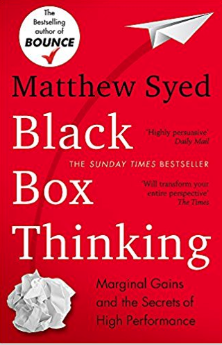Welcome to TTT Book Club, where we list some of the books (football and otherwise) discussed in TTT articles, and where, in the comments section below, subscribers can add their own thoughts and share books that are interesting them.
Remember: the first rule of TTT Book Club is: You do not talk about TTT Book Club (except that, actually, you can…).
Blink: The Power of Thinking Without Thinking by Malcom Gladwell
(Scribd link – If you do use this link, enjoy the book, then please buy it if you can afford it!)
The author describes the main subject of his book as “thin-slicing”: our ability to use limited information from a very narrow period of experience to come to a conclusion. This idea suggests that spontaneous decisions are often as good as—or even better than—carefully planned and considered ones. To reinforce his ideas, Gladwell draws from a wide range of examples from science and medicine (including malpractice suits), sales and advertising, gambling, speed dating (and predicting divorce), tennis, military war games, and the movies and popular music. Gladwell also uses many examples of regular people’s experiences with “thin-slicing,” including our instinctive ability to mind-read, which is how we can get to know a person’s emotions just by looking at his or her face. 
Gladwell explains how an expert’s ability to “thin slice” can be corrupted by their likes and dislikes, prejudices, and stereotypes (even unconscious ones). Two particular forms of unconscious bias Gladwell discusses are implicit association tests and psychological priming.
Gladwell also mentions that sometimes having too much information can interfere with the accuracy of a judgment, or a doctor’s diagnosis. In what Gladwell contends is an age of information overload, he finds that experts often make better decisions with snap judgments than they do with volumes of analysis. This is commonly called “Analysis paralysis.” The challenge is to sift through and focus on only the most critical information. The other information may be irrelevant and confusing. Collecting more information, in most cases, may reinforce our judgment but does not help make it more accurate. Gladwell explains that better judgments can be executed from simplicity and frugality of information. If the big picture is clear enough to decide, then decide from this without using a magnifying glass.
The book argues that intuitive judgment is developed by experience, training, and knowledge. For example, Gladwell claims that prejudice can operate at an intuitive unconscious level, even in individuals whose conscious attitudes are not prejudiced. An example is in the halo effect, where a person having a salient positive quality is thought to be superior in other, unrelated respects. Gladwell uses the 1999 killing of Amadou Diallo, where four New York policemen shot an innocent man on his doorstep 41 times, as another example of how rapid, intuitive judgment can have disastrous effects.
Everybody Lies: Big Data, New Data, and What the Internet Can Tell Us about Who We Really Are by Seth Stephens-Davidowitz
Blending the informed analysis of The Signal and the Noise with the instructive iconoclasm of Think Like a Freak, a fascinating, illuminating, and witty look at what the vast amounts of information now instantly available to us reveals about ourselves and our world–provided we ask the right questions.
By the end of an average day in the early twenty-first century, human beings searching the internet will amass eight trillion gigabytes of data. This staggering amount of information–unprecedented in history–can tell us a great deal about who we are–the fears, desires, and behaviours that drive us, and the conscious and unconscious decisions we make. From the profound to the mundane, we can gain astonishing knowledge about the human psyche that less than twenty years ago, seemed unfathomable.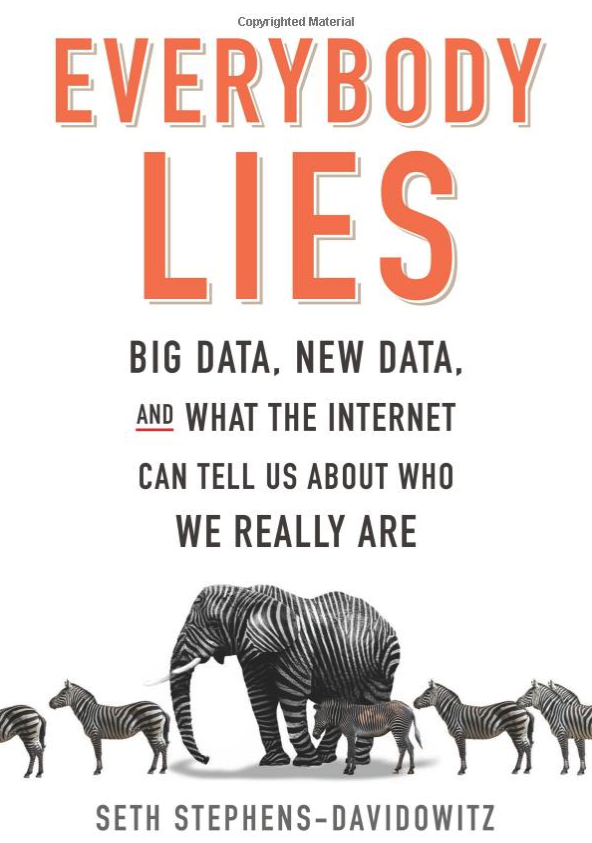
Everybody Lies offers fascinating, surprising, and sometimes laugh-out-loud insights into everything from economics to ethics to sports to race to sex, gender and more, all drawn from the world of big data. What percentage of white voters didn’t vote for Barack Obama because he’s black? Does where you go to school effect how successful you are in life? Do parents secretly favor boy children over girls? Do violent films affect the crime rate? Can you beat the stock market? How regularly do we lie about our sex lives and who’s more self-conscious about sex, men or women?
Investigating these questions and a host of others, Seth Stephens-Davidowitz offers revelations that can help us understand ourselves and our lives better. Drawing on studies and experiments on how we really live and think, he demonstrates in fascinating and often funny ways the extent to which all the world is indeed a lab. With conclusions ranging from strange-but-true to thought-provoking to disturbing, he explores the power of this digital truth serum and its deeper potential–revealing biases deeply embedded within us, information we can use to change our culture, and the questions we’re afraid to ask that might be essential to our health–both emotional and physical. All of us are touched by big data everyday, and its influence is multiplying. Everybody Lies challenges us to think differently about how we see it and the world.
Bounce: The Myth of Talent and the Power of Practice by Matthew Syed
Essential reading for an astounding summer of sport; If you’ve ever wondered what makes a champion, Bounce has the answer. 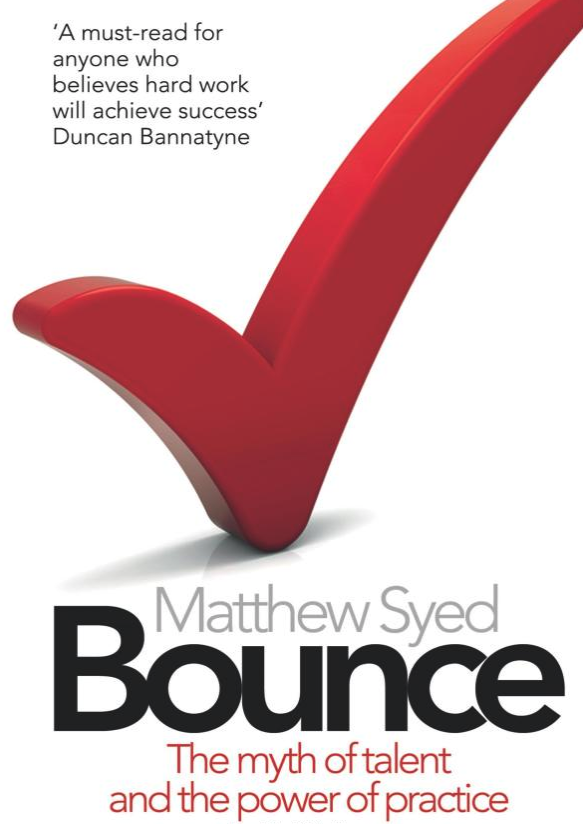
What are the real secrets of sporting success, and what lessons do they offer about life? Why doesn’t Tiger Woods “choke”? Why are the best figure skaters those that have fallen over the most and why has one small street in Reading produced more top table tennis players than the rest of the country put together.
Two-time Olympian and sports writer and broadcaster Matthew Syed draws on the latest in neuroscience and psychology to uncover the secrets of our top athletes and introduces us to an extraordinary cast of characters, including the East German athlete who became a man, and her husband – and the three Hungarian sisters who are all chess grandmasters. Bounce is crammed with fascinating stories and statistics.
Looking at controversial questions such as whether talent is more important than practice, drugs in sport (and life) and whether black people really are faster runners, the mind-bending Bounce is a must-read for the hardened sports nut or brand new convert.
Black Box Thinking: Marginal Gains and the Secrets of High Performance by Matthew Syed
What links the Mercedes Formula One team with Google?
What links Team Sky and the aviation industry?
What connects James Dyson and David Beckham?
They are all Black Box Thinkers.
Black Box Thinking is a new approach to high performance, a means of finding an edge in a complex and fast-changing world. It is not just about sport, but has powerful implications for business and politics, as well as for parents and students. In other words, all of us.
Drawing on a dizzying array of case studies and real-world examples, together with cutting-edge research on marginal gains, creativity and grit, Matthew Syed tells the inside story of how success really happens – and how we cannot grow unless we are prepared to learn from our mistakes.
Thinking, Fast and Slow – By Daniel Kahneman
Why is there more chance we’ll believe something if it’s in a bold type face? Why are judges more likely to deny parole before lunch? Why do we assume a good-looking person will be more competent? The answer lies in the two ways we make choices: fast, intuitive thinking, and slow, rational thinking. This book reveals how our minds are tripped up by error and prejudice (even when we think we are being logical), and gives you practical techniques for slower, smarter thinking. It will enable to you make better decisions at work, at home, and in everything you do.
Daniel Kahneman’s Thinking, Fast and Slow – Research Webpage
I mentioned in an earlier post Daniel Kahneman’s excellent book titled “Thinking, Fast and Slow“. As Daniel Engber from the Slate Magazine so eloquently describes, “In the course of 418 pages, Kahneman designates no fewer than three biases (confirmation, hindsight, outcome), 12 effects (halo, framing, Florida, Lady Macbeth, etc.), four fallacies (sunk-cost, narrative, planning, conjunction), six illusions (focusing, control, Moses, validity, skill, truth), two neglects (denominator, duration) and three heuristics (mood, affect, availability)”.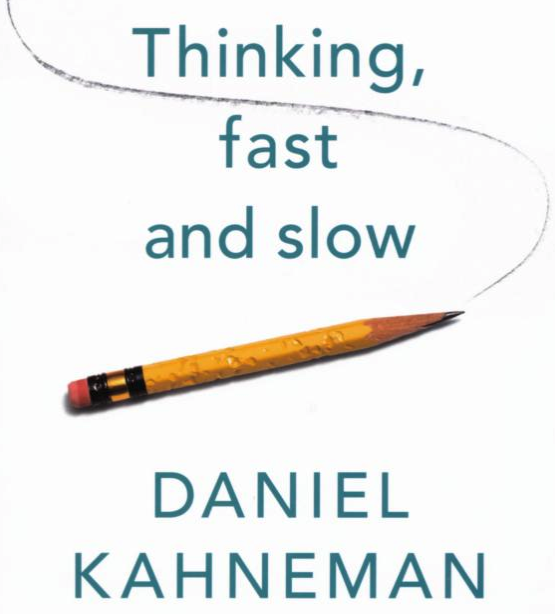
I was intending, initially, to devote some space to elaborating on these biases, effects, fallacies, neglects and heuristics. Having done dome further research I have identified other good resources that have already gone through the process of defining and elaborating on these terms. I will therefore list these links below to make it easier for you to do your own reading on the specific terms should you wish to explore this topic further.
The 3 Biases:
The 12 Effects:
- The Halo Effect
- The Framing Effect
- The Florida Effect
- The Lady Macbeth Effect
- The Endowment Effect
- The Priming Effect
- The ideomotor Effect
- The Mere Exposure Effect
- The Anchoring Effect
- The Regression Effect
- The Above-Average Effect
- The Possibility Effect
- The Certainty Effect
- The Disposition Effect
- The Framing Effect
The 4 Fallacies:
Popular Crime: Reflections on the Celebration of Violence by Bill James
From the one-of-kind mind of Bill James, famous for revolutionising the way we think about baseball, comes a “thought-provoking meditation” (Seattle Times) and epic tour through American crime–now available in paperback. The man who revolutionised the way we think about baseball examines our cultural obsession with murder–delivering a unique, engrossing, brilliant history of tabloid crime in America. 
Celebrated writer and contrarian Bill James has voraciously read true crime throughout his life and has been interested in writing a book on the topic for decades. With Popular Crime, James takes readers on an epic journey from Lizzie Borden to the Lindbergh baby, from the Black Dahlia to O. J. Simpson, explaining how crimes have been committed, investigated, prosecuted and written about, and how that has profoundly influenced our culture over the last few centuries–even if we haven’t always taken notice.
Exploring such phenomena as serial murder, the fluctuation of crime rates, the value of evidence, radicalism and crime, prison reform and the hidden ways in which crimes have shaped, or reflected, our society, James chronicles murder and misdeeds from the 1600s to the present day. James pays particular attention to crimes that were sensations during their time but have faded into obscurity, as well as still-famous cases, some that have never been solved, including the Lindbergh kidnapping, the Boston Strangler and Jon-Benet Ramsey. Satisfyingly sprawling and tremendously entertaining, Popular Crime is a professed amateur’s powerful examination of the incredible impact crime stories have on our society, culture and history.
Man from the Train by Bill James
Using unprecedented, dramatically compelling sleuthing techniques, legendary statistician and baseball writer Bill James applies his analytical acumen to crack an unsolved century-old mystery surrounding one of the deadliest serial killers in American history. Between 1898 and 1912, families across the country were bludgeoned in their sleep with the blunt side of an axe. Jewellery and valuables were left in plain sight, bodies were piled together, faces covered with cloth. 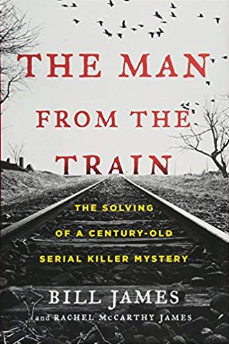
Some of these cases, like the infamous Villasca, Iowa, murders, received national attention. But few people believed the crimes were related. And fewer still would realise that all of these families lived within walking distance to a train station. When celebrated baseball statistician and true crime expert Bill James first learned about these horrors, he began to investigate others that might fit the same pattern. Applying the same know-how he brings to his legendary baseball analysis, he empirically determined which crimes were committed by the same person.
Then after sifting through thousands of local newspapers, court transcripts, and public records, he and his daughter Rachel made an astonishing discovery: they learned the true identity of this monstrous criminal. In turn, they uncovered one of the deadliest serial killers in America. Riveting and immersive, with writing as sharp as the cold side of an axe, The Man from the Train paints a vivid, psychologically perceptive portrait of America at the dawn of the twentieth century, when crime was regarded as a local problem, and opportunistic private detectives exploited a dysfunctional judicial system. James shows how these cultural factors enabled such an unspeakable series of crimes to occur, and his groundbreaking approach to true crime will convince skeptics, amaze aficionados, and change the way we view criminal history.
Moneyball: The Art of Winning an Unfair Game by Micheal Lewis
(Book review) Athletic devotion. A chance for redemption. The heroic underdog. Brains working in concert with brawn. And above all else, an unprecedented 20-game winning streak that no one saw coming. All of these elements can be found in Michael Lewis’ 2004 New York Times bestseller, Moneyball: The Art of Winning an Unfair Game External link .
The book describes “a quest for something as elusive as the Holy Grail, something that money apparently can’t buy: the secret of success in baseball,” and in a sense, that’s true. The Oakland A’s of 2002 thought that this secret lay not with athletic superstars, high-tech gear, or rabid fan bases, but with the mundane and banal data that had slowly been piling up over years of high school, college, and pro-ball competition.
Runs batted in (RBI), batting average (BA), and on-base percentage (OBP) numbers were accounted for in the past by other scouts, but none had done so with the single-minded focus shown by Oakland General Manager Billy Beane and his right hand man Paul DePodesta, a Harvard graduate who had never played pro ball in his life. 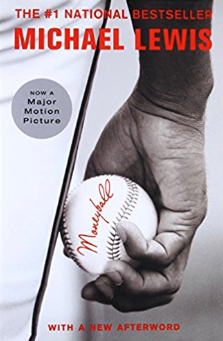
Sabermetrics, or moneyball, is the practice of crunching copious amounts of data in an effort to build a stronger and smarter team without needing to go after the rock stars of the sport who may cost a team millions. This method holds that the skill of individual players aren’t what makes or breaks a team; in the long run, the goal is to make sure that each necessary skill is accounted for, whether by one player or four. The team will work like a clock, with each cog serving its own purpose (no matter how hopeless they may be at another area).
So, while the New York Yankees went after big name players, Billy Beane sought out undervalued players like Jeremy Brown, a catcher with an arm that wouldn’t quit and an astonishing two-year record of 390 at bats, 98 walks, 38 strikeouts, and 21 home runs…who also happened to weigh in at 210 pounds. Because other teams weren’t able to see past these physical or performance flaws, the A’s were able to scoop the players up for a fraction of their true worth, enabling Beane to craft a well-honed team while staying within his meagre budget.
And meager it was. In 2002, the Oakland A’s were operating on a payroll of about $40 million for the entire season. Sounds like a lot, but not when you consider the Yankees’ payroll budget of $126 million and the average big league salary of $2.3 million. The A’s could never have afforded these players, but by relying on sabermetrics, they didn’t have to.
Lewis’ book is a cultural phenomenon for a reason: It takes America’s favourite pastime and tweaks it in a way that relies on strategy and logic, instead of just instinct. Finally, your team’s winning season stands a chance of being quantified for future replication. The feelings and emotions Moneyball generates are timeless, but the story itself is set at a very specific time—the moment in baseball where managers and scouts started to awaken to the idea that analysis of past performance—even in one specific skillset—could be just as effective as signing the big name player of the moment.
(Book review) First published as Why England Lose, Soccernomics proudly flaunts on its cover The Guardian’s opinion that it is, in fact, ‘Fantastic Freakonomics for Football’. And that is also largely what the book offers. A collection of observations and hypotheses that will seem counter-intuitive, but are supported by statistics, examples and anecdotes that will make you mumble mild expletives. For someone who has a keen understanding of the game and has closely followed the recent happenings in the footballing world, the book will present roughly an equal number occasions when you will utter an emphatic what as opposed to an exactly. For the uninitiated football fan, the book presents a treasure trove of facts, anecdotes and perspectives to get you completely hooked on to the sport. If Soccernomics doesn’t, I don’t know what will. 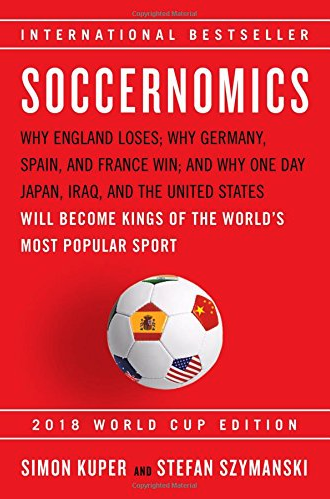
As one would expect, the book pulls references to Moneyball by Michael Lewis, quotes Billy Beane at regular intervals and also draws parallels between football and baseball. I’m not someone who follows baseball, but you do get the context of what they’re saying. Also, if you haven’t read or heard anything about Moneyball, you are living under a rock and should probably go and watch the movie based on the book to get yourself started. Alternatively, Soccernomics is another good place to start. The small anecdotes sprinkled with bullet points and fun facts make light reading and leave you feeling more intelligent about football than you earlier were. Whether or not you are actually a notch better aside, it will at least definitely change the way you played Football Manager.
Simon and Stefan call football a rather small, bad and sad business. Not all together, but one by one they explain why they say so and you’re compelled to believe them. They go on to state that people managing the sport are in fact stupid from a business point of view and then they profess that the aim of a football club should not be to generate profits but to win games. This is an ‘exactly’ moment for all of us. But it is closely followed by a ‘what’ moment as they go further to explain how the cause behind all of this is also the reason why communism fails. This is just an example of the rollercoaster ride that the book offers.
The book is written as if it is narrated by a third entity, probably www.soccernomics-agency.com, and this narrator refers to Simon and Stefan just as it refers to countless other managers, players, economists, fans, authors, pundits and other paraphernalia. For someone who doesn’t have any clue about statistics, the book may seem dry in patches, but they more than make up for it by humour served with some exquisite London Dry and tonic. What deserves notable mention though is the masterful effort at making the book readable to almost everyone. Tearing down some detailed statistical analysis, block by block, and converting it into pure text with a special emphasis on conveying the methodology while also mentioning the constraints and significance of the analysis without causing Death by Jargon is indeed a marvellous feat.
The book proves the racism against black footballers in the football world and also how it has steadily gone down as opposed to the racism that black managers have to face even today. The facts will come as a shock to you even as someone who is aware of racism in the world and in football. In this interview with Football Paradise, John Barnes says about this covert racism,
Another important theme in the book is the cause and effect relationship between football and, broadly speaking, two other factors – Economic Prosperity and Well Being of the people. These ideas come forth in various chapters in different forms. The effect of hosting a World cup on the economy of a country and on the morale of its citizens is quite fascinating to assess, especially through the lens of economics and statistics. The book, very tactfully, also handles the subject of football suicides. Those fans jumping off roofs and shooting themselves because their team lost – are they the only ones or are there others affected by football that we don’t really know about? Football is indeed much more than “a matter of life and death”. Soccernomics also questions the number of Nick Hornbyesque fans (read our review of Fever Pitch here) today in the world and what sort of an impact they have on the sport.
The most sardonic passage in the book is the opening of the chapter titled ‘Why England Lose’; perhaps the most entertaining part of the book. It starts off as a mockery of the English campaign World Cup after World Cup, but goes on to identify the contributors to the success of countries at the world stage. The role of geography in building up a successful footballing legacy and how it affects the football knowledge network is astounding. There is also the correlation of economic development with success in football and I will leave it to Simon and Stefan to unravel it for you.
All in all, the book tackles the footballing ecosystem in a way that nobody else has before, and churns out answers to questions you’ve either always wanted or to those that you need to know. And if any of the anecdotes don’t fit into these, they will in the very least be entertaining. But what Soccernomics does for every football fan is open up channels of thought that enables them to critically think and question the everyday happenings in the world of their chosen sport. It hands over a framework to the reader about how to think systematically about topics as varied as ‘Why your club falters at the fag end of the season?’ to ‘Will China’s monetary spending lead to its ascendancy in the football world?’ Above all else (and this is the reason why I urge every football fan to read it), you’ll be a better fan than you were before you read it.
The Numbers Game: Why Everything You Know About Football is Wrong by Chris Anderson and David Sally
(Book review and interview by Paul Grech)
In the beginning, there was Moneyball.
Well, not really. What kicked off sport’s interest in statistics was an underground movement in baseball headed by Bill James and which eventually made its way into the mainstream in the form of statisticians being employed by clubs. It was James who coined the term ‘sabermetrics’ (the search for objective knowledge about baseball) and who started publishing his theories in the highly influential Baseball Abstract books.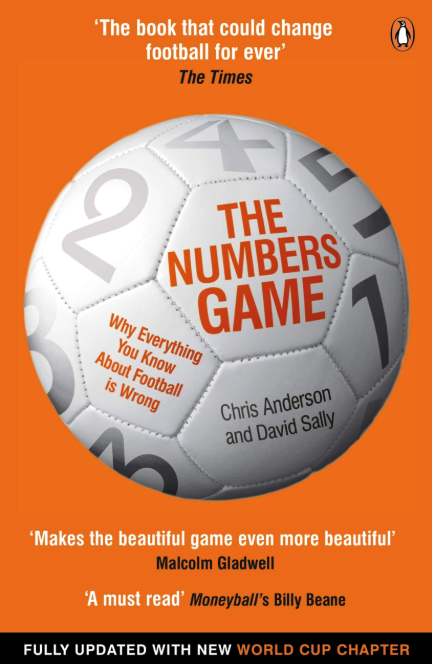
Yet it was Michael Lewis’ book ‘Moneyball’ about the Oakland ‘A’s’ use of statistics to make up for their financial disadvantage that brought it all to the public consciousness. Since then anyone wanting to try and use statistics in any sport has had to live with claims of taking a ‘Moneyball approach’.
And no sport has had to hear such accusations of late as much as football. All of which makes it all the more surprising that there is still a huge misconception as to what ‘Moneyball’ actually is. Indeed, many still harbour the belief that it is all about using statistics to determine which player should be signed and which shouldn’t. Or to use numbers to determine which players to use or which tactics to adopt.
But it isn’t about that. Or, at least, not only about that. It all centres around the idea of using statistics to gain an edge or to confirm whether the cold facts that are held in the numbers can support widely held perceptions.
Take corners. There is an inevitable rise in anticipation every time a team wins a corner, which is understandable given that this leads to a greater chance of scoring. Except it doesn’t.
That is what Chris Anderson and David Sally argue in their book ‘The Numbers Game – Why Everything You Know
About Football Is Wrong’. Again, this being a book about sports and which uses numbers, it is somewhat inevitable that ‘Moneyball’ gets a mention, but this is much more than that: whilst Moneyball was trying to explain a movement, The Number’s Game simply want to help you understand football better. Chris Anderson kindly agreed to this interview:
First of all, what’s your background? Am I right in thinking that you’ve got a past as a goalkeeper?
Yes, you’re right. I was born and raised in the old West Germany. The 1974 World Cup came around and inspired a lot of kids to take up football. My friends and I enacted the matches in an alley near my house. I ended up keeping goal for a number of years after that; eventually for a local 4th division side. When I realised I was not cut out to make it as a professional, I hung up my gloves and went to university instead, eventually earning a PhD and becoming a professor at an Ivy League university in the United States. My academic career has mostly focused on an area called political economy.
What do you make of the growing interest in the use of statistics in football? Are you surprised about how rapidly it has progressed?
We’re not really surprised. It’s part of a broader trend in professional sports. In the wake of Moneyball and the story of the Oakland A’s, analytics changed the face of baseball in the U.S. – how players are recruited, coached, and so on. In basketball, the NBA, too, is currently in a frenzy of statistical advances as clubs leapfrog each other to hire young talented quants and employ the latest technology. Lagging a little behind are the NHL (ice hockey) and NFL (American football) clubs. It’s not just an American phenomenon – think about the efforts made by Team GB for instance; rugby clubs are interested in analytics, and so are cricket and tennis. There is every reason to think that all sports in which the competition is fierce and the financial resources are adequate will go down the same path.
Then there is a push from the supply of data – compared to the days when Charles Reep, the man we call the match accountant and one of the heroes of our book, hand-coded events on the pitch, the costs of acquiring match data have plunged by orders of magnitude. When data become cheaper, more people will try to use them.
Finally, the advances in computing power and storage and statistical software that have affected all organisations in this new era of Big Data should have the same impact on football clubs. In that sense, football is no different from Tesco.
So in the end, we think it’s a kind of natural progression that will only speed up, not slow down, though the path it’ll take will be uneven and hard to predict.
What made you decide: let’s write a book?
It seemed like a fun change from writing another book on political economy! But more seriously, given the trends mentioned before, we thought someone should write a book that captures this moment of change in football, and perhaps provides a bit of additional momentum behind the reformation of numbers and statistics in the game. We call it a reformation because the revolution already happened – people like Reep and Charles Hughes and Stan Cullis and Lobanovskyi and Sam Allardyce and others were the vanguard of revolutionaries, though some of them failed miserably. In many ways, writing the book was also a journey of discovery – we were intensely curious about what was being done in football and what the numbers can and cannot tell us that we don’t know yet. We were fascinated by what we found. Turns out, there’s a lot going on in the game and behind the scenes; some of it is quite technical, some of it very political. For us, the challenge was to write about it in a way that’s fun and engaging – a book we ourselves would want to read – and we hope we did that.
To those who have read ‘Soccernomics’, why should they read ‘The Numbers’ Game’? What makes it unique?
We loved Soccernomics; along with Jonathan Wilson’s Inverting the Pyramid, it was one of our inspirations in writing The Numbers Game. We thought the application of economics and political science to football with its examinations of topics like national wealth and national team performances, supporter suicides, and discrimination in the labour (transfer) market, for example, were really informative and creative. Aside from the penalty kick chapter, though, we felt that much of the action on the pitch and on the training ground was still left to be examined, and that is what we do in The Numbers Game. To over-simplify, our book is more focused on the match, and Soccernomics is more focused on the sport. So we think of these books as being complementary; we’re thrilled you’d mention them in the same breath.
How did you decide what you were going to tackle?
That was harder than we thought. We started with the question about Rory Delap’s throw-ins and Stoke, and we just kept asking questions about what goes on in a match and in football clubs, and why. We then asked what data or research we could get our hands on that might be able to provide some insight to produce an answer. Inevitably, a tentative answer would end up raising even more questions. At some point, we had a list of about 25 chapters. We then whittled it down, but even that was tricky. So our decision rule was to focus on some of the most fundamental questions rather than of the more technical issues. For instance, is football a game of skill or luck? What matters more: offence or defence? What is possession? How would you build a team? How could we know if managers matter? And so on – the stuff we thought everyone should or would want to know. Unfortunately, this meant we had to leave some really fascinating stuff to the side. But to tell the truth, our original manuscript was more than twice as long as the final version – there was so much to write about. Our editors, however, felt that an 700-800 page tome on football numbers might not be the best idea from a marketing perspective, so we had to ruthlessly cut down each chapter to the length that they are today.
What was the most surprising area you ended up writing about?
We were convinced, as many people are, that football morphs and mutates as it crosses borders. German football is different from Spanish is different from English, etc. The numbers don’t really support this view. For the measures that matter the most – the things that decide games – the football played at the very top, in the very best leagues in the world – are basically indistinguishable. Essentially, when it comes to goals, shots, penalties, corners, you name it – it’s the same game in Premier League as it is in Serie A, La Liga, and the Bundesliga – even though it may appear to be different. The question, of course, then is why? As we say in The Numbers Game, we think this convergence is the natural effect of competition on the diffusion of talent and football knowledge across the globe.
You’ve been to a lot of clubs looking at how they work. What did you find? How prevalent is the use of statistics? How much did the football people at the clubs believe in those statistics? Or was it something that they did because everyone else was doing it?
It’s really a mix of everything. Some clubs have made significant investments in the infrastructure required to make evidence-based decisions in various areas of the club – a good example is Manchester City – while others have barely begun or have decided not to go down that road at all. Our sense is, generally speaking, that clubs typically want the numbers to tell them some very specific kinds of things, while others don’t really know what they want. Right now, a big interest is in the area of recruitment – tell me which player is better or how much a player is worth. Then there’s also statistical work that’s done during the process of due diligence when signing a player. Another area in which data are playing a growing role is in sports science – the physical and physiological side of the game. Here, there’s more of a focus on monitoring and benchmarking performance.
At the same time, there are plenty of people working for clubs who don’t quite know what to make of all the data emerging in football but want to get in on it. They’ve read Moneyball or heard of the MIT Sloan analytics conference, but the clubs they work for don’t really have an infrastructure that helps to collect, digest, and communicate quantitative information, and they don’t always have good ways of building it into their day-to-day schedules. For them, it’s a steep learning curve in terms of how to think about data, stats, software, what have you, and what it’s useful for and how to incorporate it into the club’s structure. Often, they lack a champion or support from the top.
There’s a lot of great work being done by bloggers such as Paul Tomkins and Dan Kennett but is this really ground-breaking stuff or do the statisticians employed by the clubs do similar work but we’re simply not aware of it?
Every club subscribes to at least one data provider for match data, for instance – be it Opta, Amisco/ProZone, StatDNA, etc., and every club monitors players’ training and conditioning, and so on. So clubs are quite similar in the availability and supply of the numbers they can work with, and the numbers have become plentiful and easy to access. They do differ in terms of the level of resources, manpower, and attention they pay to the data, however. On the match and scouting data side, it is fair to say that the typical club uses numbers as basically “enhanced video analysis” – that is, to put some numbers to trends that scouts would have previously had strong impressions of. There is less attention paid to whether these now quantified trends matter – do they affect the chances of winning the match? Do they mean one player is better than another – and there are challenges in translating the analytical knowledge into reality through the manager and the players.
By and large, football clubs form an “island world” in which there is a lot of imitation and mimicking; some note is clearly paid to what’s going on outside, whether it be to insightful bloggers or to other sports, but it’s all driven by the practicalities of doing a job and realities inside a club. We’ve certainly come across a number of people inside clubs who read the blogs and talk about what they see being done by outsiders. Sometimes, work by outsiders is useful, sometimes it isn’t. The trouble is that it’s quite general when the questions being asked in clubs tend to be more specific.
When Rafa Benitez was talking about the need to build a strong squad at Liverpool, he didn’t get a lot of compassion especially as there was the feeling that he had a strong enough starting 11. Yet you’ve proven that the strength of your fringe players is a significant marker of success, right?
That’s correct. As we say in The Numbers Game, we believe that football is in fundamental respects a weakest link game – the simple version of that is that our weakest player is as important, if not more important, than our strongest player. Although we focus on individual players as specific weak links, it’s important not to take that too literally; the weak link could also be a serious lack of understanding and mis-coordination between two or more players on the pitch. Going back to the Benitez example, it’s critical to have a deep enough and varied enough squad because your strongest 11 aren’t always available or who your strongest 11 are actually depends on your opponent or the time of year or any number of other factors. I was recently reminded of that when reading the really excellent Champions League Dreams by Rafa and Rory Smith.
It’s also important to remember that this does not mean that your strongest players, a Suarez, a Gerrard, don’t help you win, because they certainly do. But it is to say that the relative quality of your weaknesses has an even bigger impact on how many points you secure in a match and in a season than does the relative quality of your superstars. United last season might be a good example: they maintained their success rate in the latter half of the season even as van Persie’s production seemed to decline. Why? Because of the quality that ran down through the tail end of the starting eleven and the usual substitutes. Or think of Arsenal with and without van Persie – in the last season with him, they won 70 points; without him they produced 73.
Let’s lay out a realistic situation: if Liverpool are forced into selling Luis Suarez, in what way could statistics be used to help them find substitutes who end up doing more for the team?
The key is in your question. Individual players come and go, but football is a team game. So the trick is to figure out what a team needs to do to win games in the Premier League, and then to see how the individual and sets of players you have or might get will help you produce the right team performance up and down the pitch. Statistics can help the club identify the key markers of team production they are trying to maximise; and different players are likely to have different strengths to get the team there. Data can help you diagnose your team’s needs and possible ways of filling them with individual players.
England is perhaps unique in that a corner is met with almost as much enthusiasm as a goal (well, everywhere except at Liverpool because we seem incapable of taking them). Yet you argue that that enthusiasm is misplaced, don’t you?
We do: turns out the number of corners your team gains has only a tiny correlation with its success in a match. Although the ball is quite close to the goalmouth geographically as it’s placed in the corner, statistically it is much further away than it seems. Ironically, one reason for that of course is that the defending team thinks corners are dangerous, so they defend them systematically and vigorously, further diminishing their impact. What is also under-appreciated is that your own chance of scoring is balanced by your vulnerability to a counter-attack. Just two days ago, we had an email from a performance analyst for a top club in Brazil who was reading The Numbers Game and had found the same in Série A; it seems to be a general phenomenon.
Masters of Modern Soccer: How the World’s Best Play the Twenty-First Century Game by Grant Wahl
Long-time players and fans of soccer will notice how different the contemporary game is compared to the matches played in the 1970’s and 1980’s. There are several reasons for this, most notably the changes in responsibilities of the positions and the use of analytics. America’s premier soccer writer, Grant Wahl, interviewed seven men who are the premier people in their position or job in international soccer and the result is this excellent book. 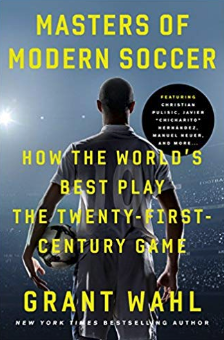
This book has been compared to the best-selling baseball book “Men At Work” by George Will. In that one, Will broke down baseball by writing about various jobs done by people in the game and wrote about how the best performers handle that job. Wahl does the same thing for soccer as he interviews the best players and management personnel. The players are American midfielder Christian Pulisic, Mexican forward Javier “Chicarito” Hernandez, Belgian centerback Vincent Kompany, Spain’s Xabi Alonso and German goalkeeper Mauel Neuer.
Their insight into the game makes for compelling reading as they each share what they do to be the best at their position. Whether it is how Kompany positions himself in relation to the opponent’s best goal scorer, the “Wow moments” Pulisic provides to fans or the drills on which Neuer works to improve his reflexes, each section is a lesson in how today’s game is played and why the sport has changed so much over the last few decades.
These changes are noted often by Wahl as he talks about positions that are no longer in vogue, such as the sweeper, or how drastically the skills have changed in order to be an elite player. This is clearly evident for a goalkeeper, where Wahl writes that shot blocking, once considered the primary job of the keeper, is now only one of several skills at which a goalkeeper must excel. Neuer’s insight backs up this assertion.
Coaching and management get the same treatment as players do in this book as Belgium coach Roberto Martinez and Borussia Dortmund sporting director Michael Zorc are also interviewed and share their secrets for success as well. The biggest takeaway from these chapters was also mentioned in some of the players’ chapters. The used of advanced statistical analysis is just as prevalent in professional soccer as it is in other sports, again most notably baseball. There is even a reference to “Moneyball” in the book as much like the Oakland A’s, Borussia Dortmund does not have the same financial resources like some other clubs like Manchester United, Real Madrid or Barcelona. As a result, they do some creative thinking in the front office and Zorc’s insight will provide readers with some new information about this part of the sport.
Written with American readers in mind, this work is truly a masterpiece of the modern game. Wahl was the first author to write a soccer book that became a New York Times bestseller with his 2009 biography of David Beckham. This book could very well become his second. If a reader has any interest in the sport, no matter how much or how little, this is a book that must not be missed.
The Mixer: The Story of Premier League Tactics, from Route One to False Nines by Micheal Cox
Back in 1992, English football was stuck in the dark ages, emerging from a five-year ban from European competition. The game was physical, bruising and attritional, based on strength over speed, aggression over finesse. It was the era of the midfield general, reducers, big men up front and getting it in the mixer; 4-4-2 was the order of the day. Few teams experimented tactically.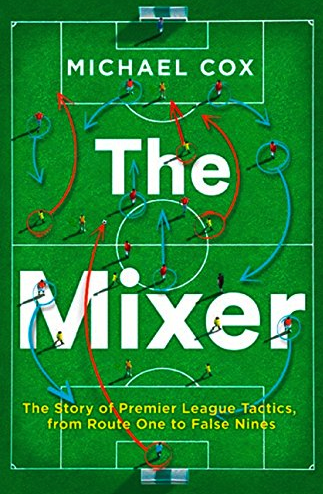
And then, almost overnight, it all changed. The creation of the Premier League coincided with one of the most seismic rule changes in football history: the abolition of the back-pass. Suddenly defenders had no-get-out-of-jail-free card, goalkeepers had to be able to field and play the ball and the pace of the game quickened immeasurably. Tactics evolved dramatically, helped by an increased foreign influence.
The Mixer is the first book to delve deep into the tactical story of the Premier League, and take a long view of how the game has developed over the last quarter century. From Ferguson’s directness to Keegan’s relentlessly attacking Newcastle outfit, to Mourinho’s cagey, reactive Chelsea, all the way to Ranieri’s counter-attacking champions, The Mixer is one of the most entertaining, rich and knowledgeable football books ever written.
